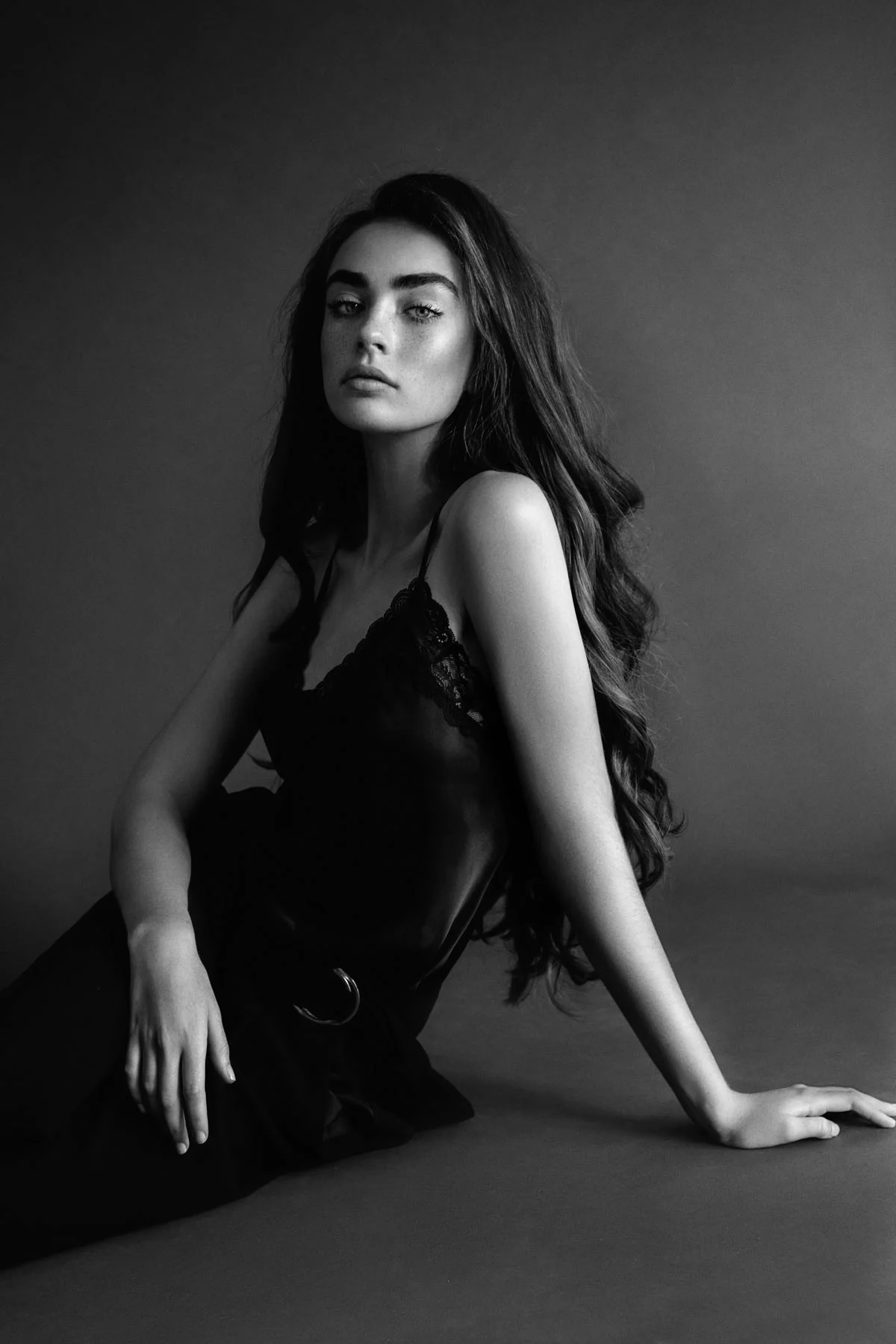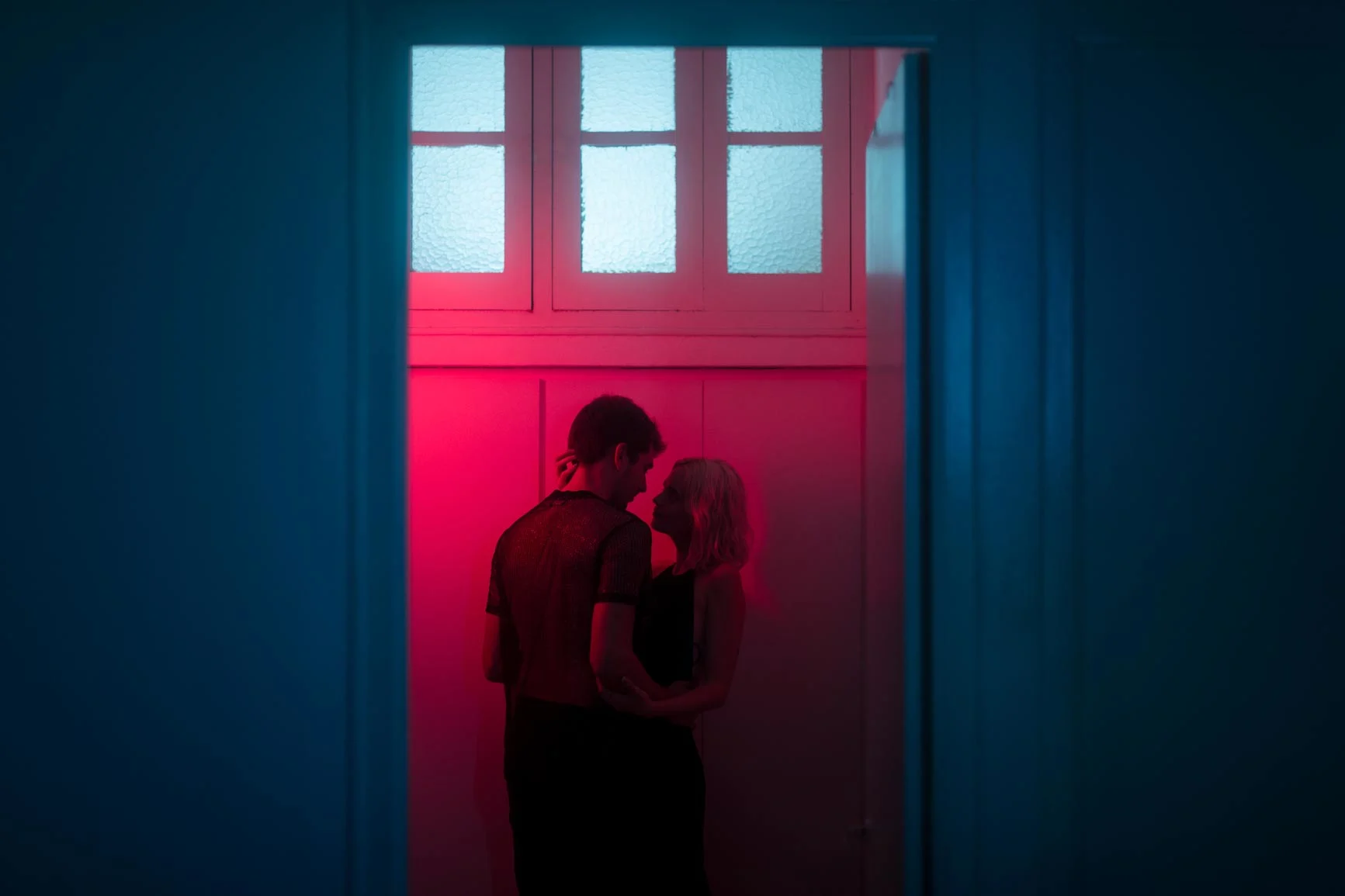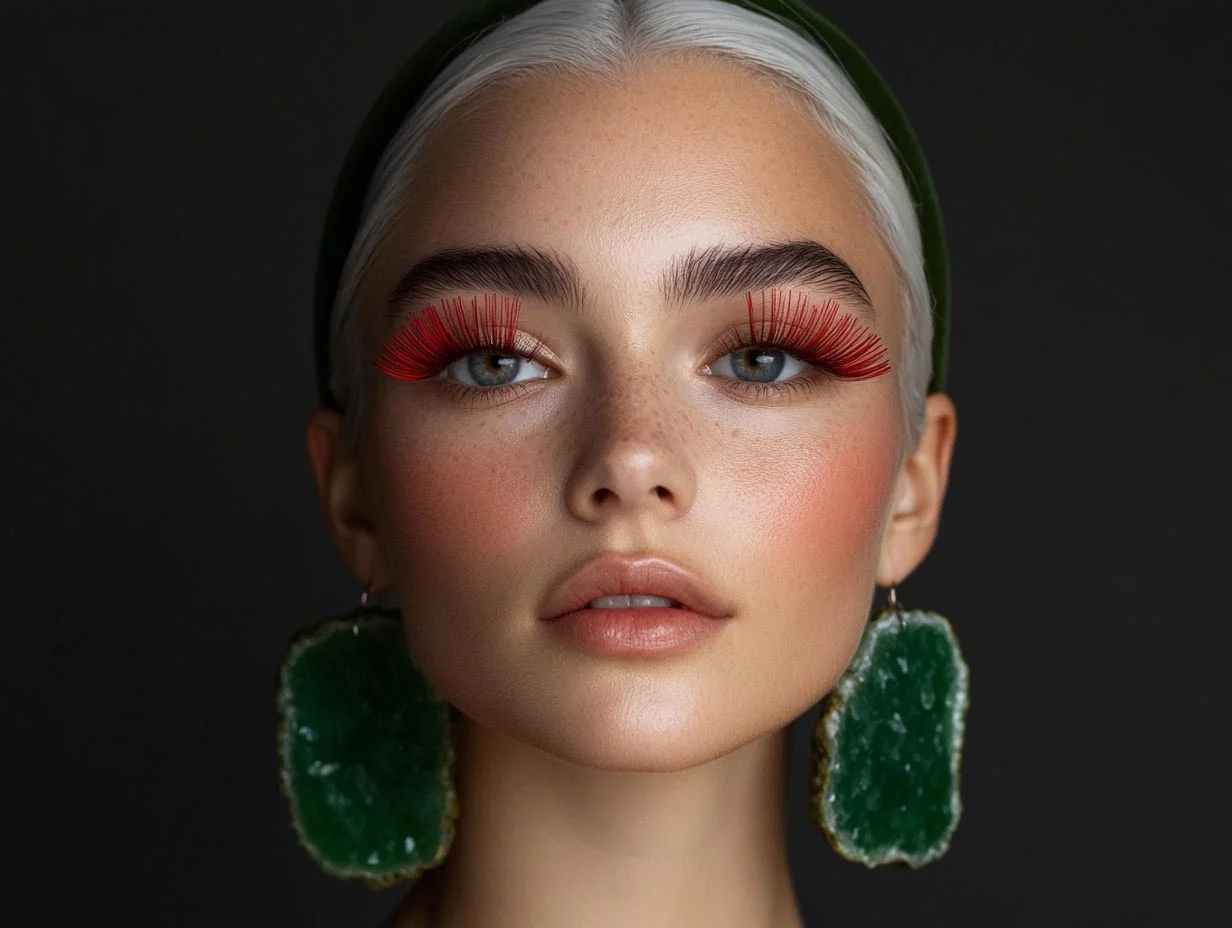Creative flash and off-camera flash – with unleashed flash
From WhiteWall expert Katharina Wergen
Photography is much more than just capturing moments; it is an art form characterized by the conscious use of light. Light is the central element of every photograph; it shapes the scene, highlights details, and significantly influences the mood of an image. While natural light and studio lighting are often considered the primary tools of lighting design, the creative use of flash, especially off-camera flash techniques, offers an almost unlimited range of possibilities for enhancing and altering the visual aesthetics of images.
The targeted use of flash, especially working with a flash unit that is not directly attached to the camera, gives photographers the ability to place light independently of the camera's position. This allows for versatile control of light and shadow and creates space for creative effects.
What is creative flash and off-camera flash?
Creative flash photography is not about simply brightening a subject, but about the deliberate use of flash to give images an artistic aspect. At the heart of this technique is the idea of using flash as a creative tool that changes and enriches both the atmosphere and the composition of a scene.
With off-camera flash, also known as "unleashed flash," the flash unit is not mounted directly on the camera but is positioned away from it. The spatial separation of the camera and flash allows the photographer to use the light from different angles and distances to achieve the desired lighting effect. This technique is particularly popular in portrait, event, fashion, and advertising photography, where it allows precise control of the lighting and leads to extraordinary results.
The advantages of off-camera flash
The advantages of off-camera flash photography are obvious. It offers enormous flexibility in lighting design. While a flash mounted on the camera often results in flat, frontal light that minimizes shadows and reduces the depth of a scene, off-camera flash allows for lighting that emphasizes shadows and contrasts and highlights the three-dimensionality of a subject.
In addition, off-camera flash can be used to create different lighting moods that would be difficult or impossible to achieve with natural light alone. For example, combining flash and ambient light can create exciting effects that enhance or even completely change the mood of a scene.
The necessary equipment
Off-camera flash requires a certain amount of technical understanding and precise planning. The basic equipment consists of a flash unit, a trigger that synchronizes the camera and the flash, and various light modifiers such as softboxes, umbrellas, or reflectors that shape and direct the light.
Flash
The flash unit is the central tool of off-camera flash photography. Modern flash units offer a wide range of settings that allow the photographer to precisely control the flash intensity, duration, and angle of the light cone. Many flash units also support high-speed synchronization (HSS), which allows you to work with very short shutter speeds and thus use the flash effectively even in bright daylight.

Another important aspect is the positioning of the flash unit. The angle at which the light falls on the subject has a significant influence on the effect of the light. A flash coming from the side creates hard shadows and emphasizes the texture of the subject, while a flash from above or below models the shape of the subject more strongly and gives it depth.
Trigger and synchronization
To ensure that the flash fires at the right moment, precise synchronization with the camera is required. Special triggers are used for this purpose, which are connected to the camera either by cable or wirelessly. Wireless triggers have the advantage of giving the photographer more freedom of movement and flexibility when positioning the flash unit.
Modern trigger systems use radio technology to ensure a reliable and interference-free connection between the camera and the flash unit. These systems often also offer the option of controlling several flash units simultaneously, which is particularly advantageous for more complex lighting setups.

Light shapers and modifiers
Choosing the right light shaper is crucial for the effect of the flash. Softboxes and umbrellas, for example, diffuse the light and provide soft, even illumination that is particularly suitable for portraits. Reflectors can be used to direct the light to specific areas of the subject to highlight details or brighten shadows.
Gels, which are placed in front of the flash head, can also be used to change the color of the light and thus influence the mood of an image. Colored gels are often used in creative photography to achieve interesting effects or to match the flash light to the ambient light.
Areas of application
The possibilities for using creative flash and off-camera flash are endless, ranging from portrait photography to product photography to landscape and architectural photography. In each of these disciplines, the targeted use of flash can help take the image to a new aesthetic level.
Portrait photography
In portrait photography, flash is often used to emphasize the model's face and create a certain mood. With a remote flash, the light can be positioned to model and emphasize the model's facial features. Softboxes or umbrellas can be used to make the light softer and more flattering, while hard light sources such as a flash without a diffuser allow for dramatic and high-contrast portraits.
An example of the creative use of flash in portrait photography is the so-called "Rembrandt light," in which the flash is positioned away from the camera so that it creates a distinctive triangular spot of light below the eye on one half of the model's face, while the other half remains largely in shadow. This effect, named after the Dutch painter Rembrandt, gives the portrait a dramatic and artistic expression.
Event and wedding photography
Creative flash also plays an important role in event and wedding photography. Here, it is often used to capture and emphasize the atmosphere of a scene. With off-camera flash, the light can be directed specifically at the bride and groom or special details such as the bridal bouquet, the wedding table, or the decorations, while the ambient light illuminates the rest of the scene.
Off-camera flash can help optimize lighting and ensure that the bride and groom are perfectly lit even in difficult lighting situations, especially at outdoor weddings where natural light is often difficult to control.
Would you like to surprise the bride and groom with the most beautiful photos of their wedding in a high-quality photo book? Then we have the perfect product for you with the elegant WhiteWall Coffee Table Book.
Product and advertising photography
In product and advertising photography, flash is used to show products in their best light and highlight their features. It is particularly important to position the light so that the texture, shape, and color of the product are shown to their best advantage. Working with off-camera flashes allows you to direct the light onto specific areas of the product, emphasizing reflective surfaces or complex structures, for example.
By using light modifiers such as spot attachments or honeycomb attachments, the light can be bundled and concentrated on specific details, which is often crucial for the image effect in product photography. The use of gels to change the color of the light is also a popular means of increasing the visual appeal of a product in advertising photography.
Landscape and architectural photography
Flash is used less frequently in landscape and architectural photography, but can be very useful in certain situations. For example, a flash can be used away from the camera to highlight specific details of a landscape or building that would be lost in natural light. This can be particularly useful at dusk or when shooting at night when the ambient light is low.
In architectural photography, too, interesting effects can be achieved through the targeted use of flash, for example to highlight certain structures or to add accents to otherwise evenly lit scenes.
Present your most beautiful landscape and architectural photos as ultraHD photo prints behind acrylic glass.
Challenges and solutions when working with off-camera flashes
Although off-camera flash offers many creative possibilities, it also presents some challenges. One of the biggest challenges is controlling the flash so that it blends harmoniously with the ambient light and does not create unnatural-looking shadows or overexposure.
The right balance between flash and ambient light is crucial to the impact of an image. If the flash is too strong, it can overwhelm the natural light and make the image appear flat and artificial. If the flash is too weak, it will not be effective and the image will be underexposed.
A proven method for finding the right balance is flash exposure compensation, which reduces the flash output to better match the ambient light. Using ND filters, which reduce the amount of light hitting the sensor, can also help prevent overexposure and make the flash more subtle. Colored gel filters can also help to adjust the often daylight-like color temperature of the flash to the color temperature of the ambient light. An orange filter, for example, provides a warmer flash when shooting outdoors during the golden hour or indoors with light sources of a warm color temperature.
Selecting the correct flash angle
Another important aspect is choosing the right flash angle. The angle at which the flash hits the subject has a major impact on the lighting effect and the shadows created. A flash directly from the front produces flat, poorly defined shadows, while a flash from the side or above creates shadows that add depth and texture to the image.
A popular technique when working with off-camera flashes is the so-called "bounce technique," in which the flash is reflected off a wall or ceiling before reaching the subject. This technique creates a soft, diffused light and reduces the harsh shadows that can result from direct flash.

Dealing with reflections and mirror images
Especially in product photography, but also in portrait photography, the use of flash can cause unwanted reflections and mirror images. These often occur on shiny surfaces such as glass, metal, or water and can significantly impair the image quality.
To avoid reflections, the flash angle can be adjusted so that the light does not hit the reflective surface directly, but instead hits it at an angle that directs the reflection out of the camera's field of view. The use of polarizing filters, which reduce unwanted reflections, can also be helpful in such situations.
Conclusion: Creative flash photography as the key to professional lighting design
Creative flash and off-camera flash techniques offer photographers a powerful way to use light in a targeted manner and take their images to a new artistic level. By consciously controlling the flash, light and shadow can be precisely controlled, thereby significantly influencing the atmosphere and mood of an image.
Even though the use of off-camera flash units presents a number of technical challenges, the effort is well worth it, as the effects that can be achieved are often impressive and offer significant added value compared to the use of standard light sources. Whether in portrait, event, product, landscape, or architectural photography, the creative use of flash opens up a world of possibilities where imagination knows no bounds. Those who are willing to experiment with light and try out new techniques will quickly discover how much their photographic results can improve.
Would you like a special presentation for your most beautiful photos? With our elegant frames, your pictures will be eye-catching!
Learn more about the author
As a trained portrait and wedding photographer, Katharina Wergen brings her extensive knowledge to photography. She has been working as a sales consultant at WhiteWall since 2018 and supports exhibition projects for museums and galleries. She is also increasingly focusing on reportage photography. Take a look behind the scenes of the photographer, here in the interview.

Also interesting:
Submitted by WhiteWall expert Katharina Wergen
Mixed lighting scenarios: Atmospheric photos with mixed light
Learn how to work harmoniously with different light sources and create atmospheric photos. Whether it's everyday life, events, or architecture, with the right tips, handling mixed light is easy and produces impressive images.
Submitted by WhiteWall expert Katharina Wergen
Advanced Studio Lighting Setups
Discover how you can take your photos to the next level with targeted light sources and creative setups. Whether you're shooting portraits, fashion, or products, the right setup will help you create expressive images with depth, impact, and character. Ideal for anyone who wants to use light consciously.
Submitted by WhiteWall expert Katharina Wergen
The use of light modifiers
Learn how to get the most out of your light source with softboxes, beauty dishes, spot attachments, and more. Whether you're shooting portraits, products, or fashion, the right light shaper will help you create professional-looking images. Discover more now!




